LA Story: An In-Depth Look at the Rising Tide of House and Techno in the City of Angels
The Los Angeles dance scene is at once effortlessly cosmopolitan, and confoundingly insular. Home to […]
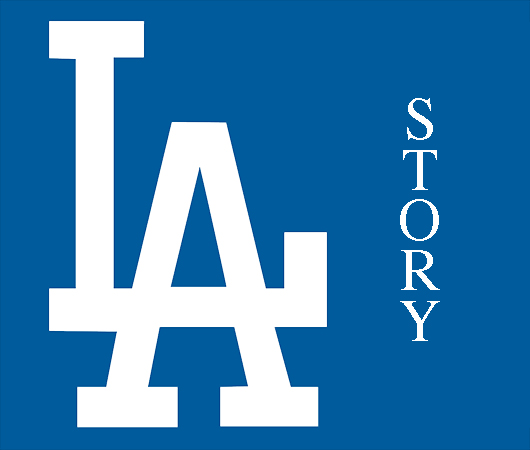
LA Story: An In-Depth Look at the Rising Tide of House and Techno in the City of Angels
The Los Angeles dance scene is at once effortlessly cosmopolitan, and confoundingly insular. Home to […]

The Los Angeles dance scene is at once effortlessly cosmopolitan, and confoundingly insular. Home to superstars like Daft Punk, certifiable legends like Todd Edwards, underground icons like Flying Lotus, and scores of anonymous ghost producers crafting EDM hits, Southern California hosts a rather diverse swath of the electronic landscape. Granted, this isn’t exactly surprising, as LA’s hills and quality of life (read: weather) regularly attract outsiders. LA’s enormous size, not to mention the fact that it’s literally home to the bulk of the entertainment industry, often means that local producers can garner international acclaim while remaining relatively unknown within city limits, and the abundance of cheap tacos, (effectively) legal weed, and pool and park parties provides ample respite from the hustle. On a more practical level, LA’s sprawling warehouse districts—which lie mostly south and east of downtown—are a draw to rave promoters of all stripes. These venues—of varying legal status—regularly feature quality DJs from around the globe, yet they open and shut their doors in alarmingly short increments. (Recent months have seen the LAPD shutting down a number of underground events, and some of the city’s more offbeat venues have also fallen victim to official rules and regulations.) With so many things happening and a status quo that’s constantly in flux, taking the pulse of LA’s dance scene can occasionally be as frustrating as driving from Santa Monica to downtown during rush hour.
That said, something exciting is in the air, and much of it centers around the city’s resurgent house and techno underground. Of course, these sounds aren’t exactly new to LA; veterans like Doc Martin and Marques Wyatt have been at it for years, and the city had a thriving rave scene in the ’90s. That said, over the past decade, talk of electronic music in LA centered almost entirely around the city’s so-called beat scene, in which artists such as the aforementioned Flying Lotus (with his Brainfeeder camp in tow), Nosaj Thing, and Daedelus have turned out experimental and leftfield takes on hip-hop rhythms, with the long-running Low End Theory party serving as their primary hub of innovation. And though this music certainly hasn’t gone away—FlyLo, Brainfeeder, and Low End Theory are arguably bigger than ever, while younger acts such as Shlohmo, along with his Wedidit collective, are on the verge of crossing over into the mainstream—the past few years have seen the city’s music scene increasingly moving back toward more house- and techno-oriented sounds.
Todd Edwards
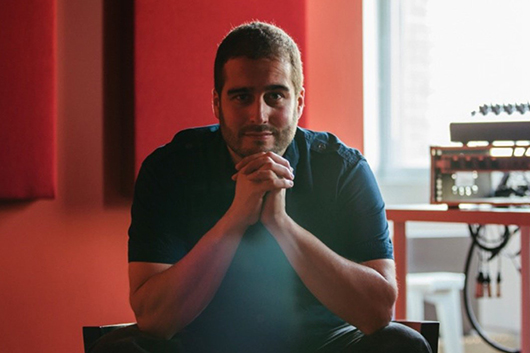
Body High’s Jerome LOL and Samo Sound Boy (a.k.a. DJ Dodger Stadium)
(Photo by Ye Rin Mok)
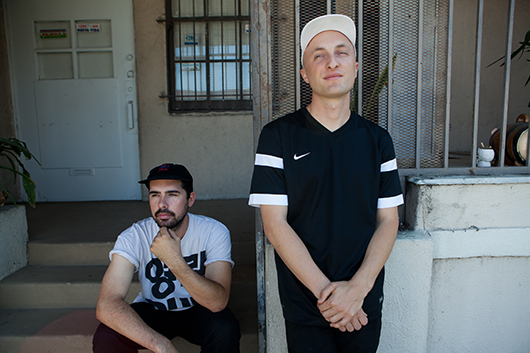
A recent night found the veteran Droid Behavior crew presenting a stacked local techno line-up featuring Drumcell, Raiz, and Truncate, while San Francisco legend Jeno played down the street and Prosumer and Hunee co-headlined yet another party. All three events were packed, but it’s not just the parties that are booming. The city’s label infrastructure is also experiencing a major growth spurt, and is quickly becoming as deep and complex as the LA freeway system—Acid Test, Body High, ESP Institute, Friends of Friends (and its Young Adults offshoot), Historia y Violencia, L.A. Club Resource, 100% Silk, and Peak Oil are just a few of the vinyl-focused imprints operating at present. Furthermore, many of LA’s most exciting young producers have shrugged off genre orthodoxy while making music that still works for the dancefloor.
West side native Benedek epitomizes this approach. His first 7″, on Proximal, featured local boogie-funk prophet Dam-Funk. Benedek’s 2013 EP on Peoples Potential Unlimited, however, integrated garage house and mannered ’80s influences like Yellow Magic Orchestra, and his current sound fits in well alongside the hazy house jams of Vancouver’s Mood Hut collective. “My music is urban,” says Benedek, “but there is definitely an introspective quality to it which borrows from new age and jazz fusion. I’m equally interested in G-funk, house, boogie, new wave—there’s an otherworldliness to my music, but it’s definitely based in the streets. Where I grew up is basically in the mountains, [but] I’d be traveling from the woods to the city very quickly.”
Benedek is currently collaborating with a dizzying array of musicians, including Rare Times and Delroy Edwards. He refers to the latter project, Rx, as the product of a series of live, straight-to-tape jams that “sound like something not of this era, some weird, VHS-corroded new jack with hip-hop drums.” The debut Rx 7″ is set to drop soon on PPU.
Benedek
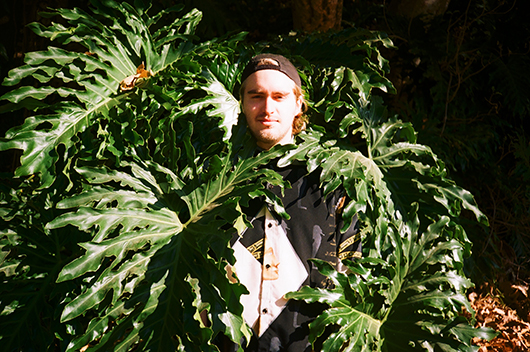
Delroy Edwards
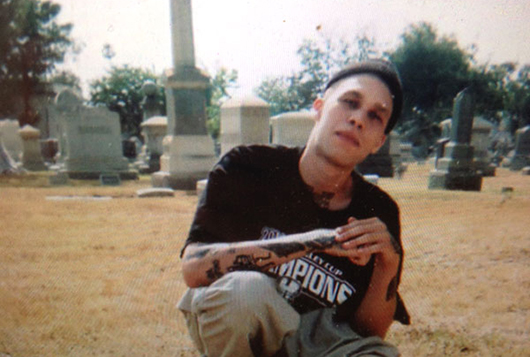
Speaking of Delroy Edwards, his music career has already involved a series of exhilarating left turns. After receiving some encouragement from his former boss at A-1 Records, Ron Morelli, Edwards put out a few much-lauded, ghetto-house-indebted 12″ records (on Morelli’s own L.I.E.S. label), toured Europe, and started his own L.A. Club Resource imprint. Still, even though he was initially hailed as one of the leading figures in the nebulous “outsider house” scene, Edwards has refused to follow a single stylistic template. His Teenage Tapes 12″ offered up noisy excursions into no wave, while his DJ Punisher alias has been responsible for some raw, ear-throttling pieces of techno. During a recent gig at L.A. Club Resource signee Meghan Edwards‘ tiny pop-up party TOP40, he dropped G-funk and gangster rap all night. Many of those records served as the direct inspiration for both volumes of his screw tape series, Slowed Down Funk. A few months back, Edwards was invited to play at Hollywood superclub Avalon; he played freestyle and jagged Chicago house, nonchalantly thinning out the late-night crowd in the process. Hollywood may not appreciate what he’s doing, but in LA’s underground, Edwards’ libertine spirit is something to celebrate.
Underground Resistance affiliate Santiago Salazar agrees. “I’m very excited for the newer wave parties and pay close attention to the music they are showcasing,” he says. “I’m hearing a lot more experimental stuff and I like it.” Salazar’s been DJing since 1992, when he cut his teeth playing marathon sets at a gay bar in LA’s Rampart district. After cold calling Underground Resistance/Submerge HQ, he moved his family to Detroit to study with “Mad” Mike Banks. Now back in LA, he explores different variants of high-tech soul with his ICAN label (founded with Esteban Adame) and Historia y Violencia, which he founded with Juan Mendez (a.k.a. Silent Servant), but now runs alone. (Mendez is currently focusing on the Jealous God label, which he runs in tandem with former Sandwell District partner Regis.)
Santiago Salazar
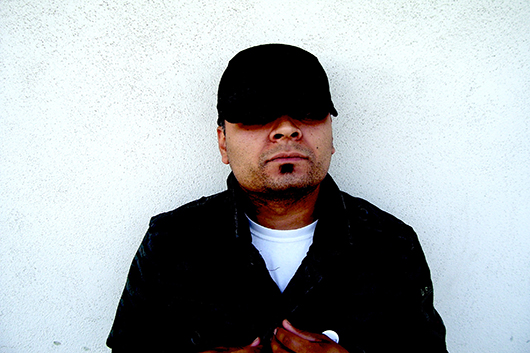
Silent Servant
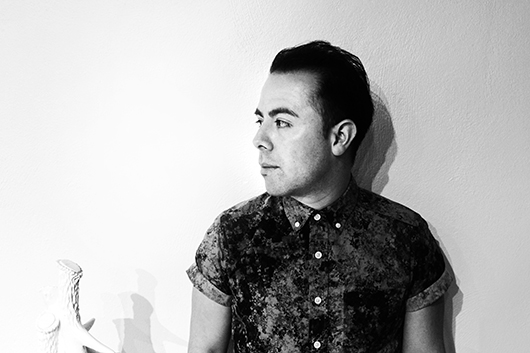
Salazar is dubious about the existence of an encompassing “LA sound,” stating, “I think our sound is all over the place, influenced by so much.” His label ICAN attempts to capture the feeling of the East LA backyard party scene he experienced growing up with Adame, while Historia Y Violencia explored driving techno while maintaining a Latino feel. “I feel it’s important to rep LA,” he says, “because this city has always had a long history with dancefloors worldwide. Since the mid ’80s with Latin freestyle music to the mid ’90s with artists such as John Tejada and David Alvarado, LA has been present in the underground around the world.”
Of course, when speaking about the history of LA’s dance music scene, few figures loom larger than DJ Harvey. The UK transplant’s Sarcastic Disco parties are legendary, and have laid a real foundation for a local appreciation of dance music, old and new. In his wake, an entire crop of DJs has sprung up whose m.o. has little to do with playing only the freshest cuts; for artists like Heidi, Junior, Paul T., Dirty Dave, Splits Secs, Dewey Chan, Lovefingers, and Cosmic Kids, dropping vintage and little-heard unclassics is a big part of their appeal.
DJ Harvey
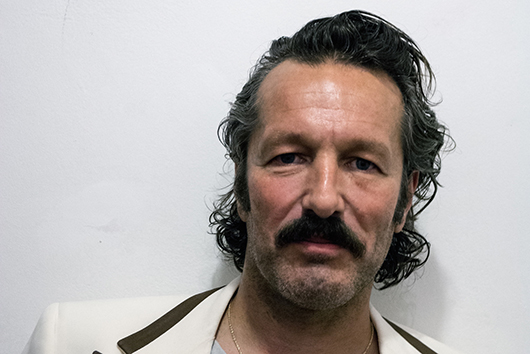
Suzanne Kraft
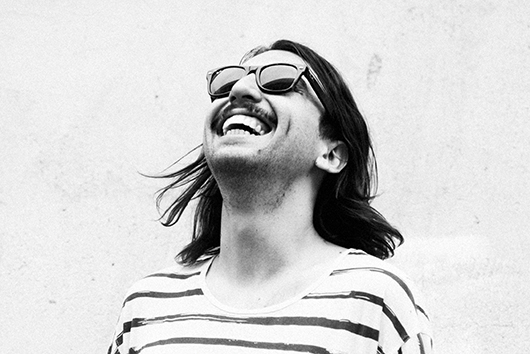
Diego Herrera (a.k.a. Suzanne Kraft) is another DJ who frequently looks to the past for inspiration, though he’s had much less time to dig. Herrera, who’s still in his early 20s, is a regular presence at Dublab, a long-running, community-funded online radio station that has been broadcasting and providing a home to much of LA’s leftfield musical talent since 1999. Herrera discovered the LA institution while in high school, and eventually began taking two buses and a train to intern at the community-funded radio station. Within the past few years, he’s begun releasing music of his own via the Running Back and Young Adults labels, earning him an international reputation—and a spot at 2013’s Red Bull Music Academy in NYC—while displaying a pleasantly skewed house sound that’s colored by komische and new age. These days, Herrera has become one of Dublab’s staffers, but there’s still plenty of time for making music, both by himself and in collaboration with others. He plays synths in Pharaohs, works with Eddie Ruscha, Jr. (a.k.a. Secret Circuit) as Blase and with Ruscha and Brooklyn producer Willie Burns as Odd Numbers. When it comes to the local music landscape, Herrera speaks highly of his LA peers and acknowledges that the dance scene is growing, yet he gripes that some late-night events render music secondary to partying. “The after-hours stuff generally has the same vibe,” he explains. “After, say, 3 a.m. you get this rush of people who just want to be at this party because it’s on and they want to party—which isn’t a bad thing, just not my thing.”
It is LA after all. There’s never a shortage of people looking to party, and many of them want to stay out well past California’s official 2 a.m. alcohol curfew. And in recent years, they’ve been finding an increasing number of options, both licensed and underground. A Club Called Rhonda, LA’s self-described “pansexual party palace” and one of the city’s defining club nights, places legends like Theo Parrish alongside populist house acts like Basement Jaxx and relative newcomers like Space Dimension Controller. At the same time, it’s a party where working a look is as important as the world-class DJs. Similarly stylish—albeit in a completely different way— are the events put on by Mount Analog. Since opening in 2013, the Highland Park vinyl boutique has quickly become an essential part of LA’s music landscape. On a basic level, the shop is one of the few spots in LA where DJs can pick up the latest bits of cutting-edge dance music, but Mount Analog has taken its mission a step further by applying its keen curatorial instincts to a series of esoteric, all-night events. For instance, one of its recent Nuit Noire parties kicked off with the scorched-earth noise techno of Opal Tapes affiliate Dreamweapon and ended with the hypnotic, John Carpenter-influenced house of Crimes of the Future bossmen Timothy J. Fairplay and Scott Fraser. Pushing boundaries and flipping conventional party wisdom is part of the plan, as Mount Analog co-founder Mahssa Taghinia thinks that “messy” line-ups presented in warehouse settings are part of what “makes Los Angeles so special right now.”
Seven Davis Jr.
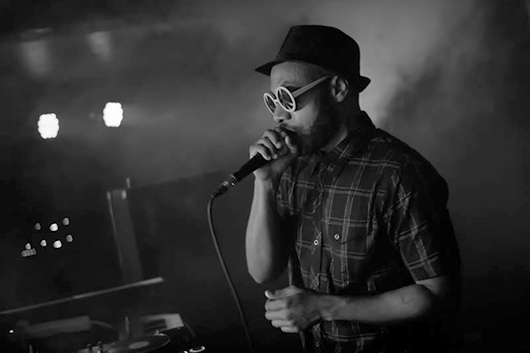
SFV Acid
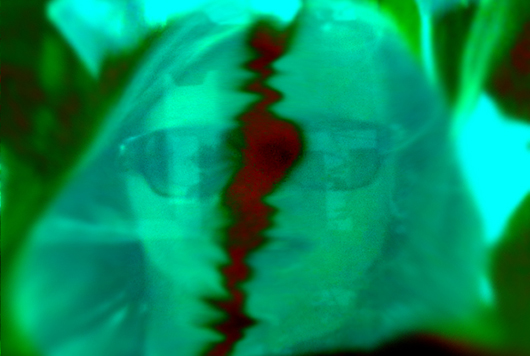
In fairness, not all of LA’s interesting producers and DJs can be found banging away in a decrepit East LA warehouse. Take Seven Davis Jr., who actually resides in the LA suburb of Burbank. Prior to the release of last year’s One EP, Davis Jr. was an obscure musician who worked as a professional songwriter and operated on edge of LA’s beat scene, but he’s since ridden his Prince meets KDJ sound around the globe—and onto additional releases for the Apron and Classic labels—and has only rarely been spotted around the Southland since.
Also toiling happily off the grid is SFV Acid (a.k.a. Zane Reynolds), who makes a lot of his music outside of a Starbucks in the San Fernando Valley and recently released Amber’s Songs, his most realized collection of sunsick house to date. CalArts professor Jordan Hochenbaum moonlights as deep house/techno producer Natan H, and has issued transmissions via ManMakeMusic, Appian, and Batti Batti. Rising duo Newbody comes straight out of Long Beach with its swinging, ’90s-inspired house sound. Then there’s Gabriel Reyes-Whittaker (a.k.a. Gifted and Blessed), an LA native who’s temporarily living in Santa Fe, New Mexico, but will soon be returning to Southern California. Last year, Reyes-Whittaker quietly released an incredible Gifted and Blessed album, Within These Machines, and he’s continued to issue a steady stream of EPs under his Abstract Eye, The Reflektor, and Frankie Reyes aliases. The prolific producer recently spoke to KCRW’s Anthony Valadez, and his comments mirrored the musical omnivorism of LA’s young dance producers. “There is really not too much separation now,” he says. “You can be a lover of rock music, a lover of beat music and house music at the same time and it’s really nothing.”
Gifted and Blessed
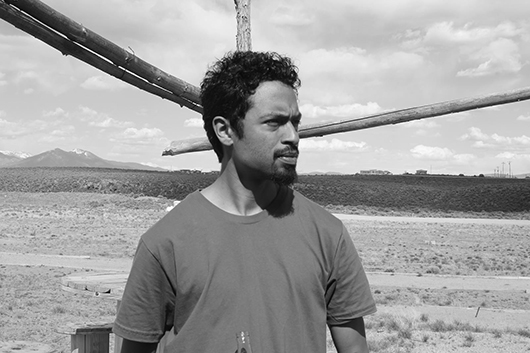
Kingdom (Photo by Ye Rin Mok)
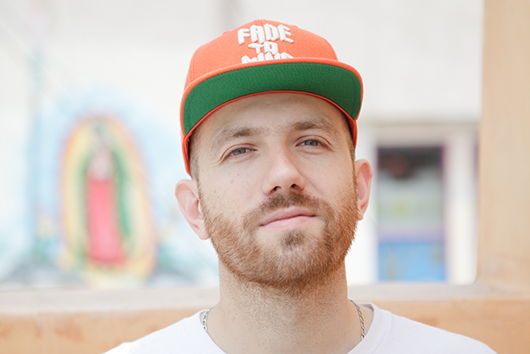
This sort of diversity is certainly evident in the work of Fade to Mind, the label/crew headed up by Kingdom and Prince William. A sister outfit to London’s Night Slugs, Fade to Mind champions a futuristic brand of club music that makes few distinctions between the mainstream and the underground while combining bits of house, techno, street rap, grime, footwork, R&B, and more. 2013 saw the crew receiving its greatest accolades to date, largely thanks to the rise of R&B songstress Kelela. Her Fade to Mind-issued mixtape, Cut 4 Me, not only showcased her stunning vocal talents, but also the production skills of LA beatmakers like Kingdom, Gifted and Blessed, Fade to Mind’s Nguzunguzu, Napolian, and P. Morris. (Interestingly enough, she followed Cut 4 Me with “The High,” a single produced by Gifted and Blessed.)
If Kelela is the voice, then Total Freedom is perhaps the Fade to Mind crew’s most respected DJ, calmly steering her live sets while touring internationally and somehow holding down a Monday-night residency at gay-leaning weekly Mustache Mondays. The party, which takes place at unassuming downtown LA bar La Cita, has him playing everything from snippets of drill mixtapes to bass-heavy remixes of classic house tracks alongside co-resident Josh Peace. Playing host to drag shows and international DJs alike, Mustache Mondays embodies the open-minded spirit of Los Angeles. Simply put, there’s room for everyone.
Kelela (Photo by Sequoia Ziff Photographs)
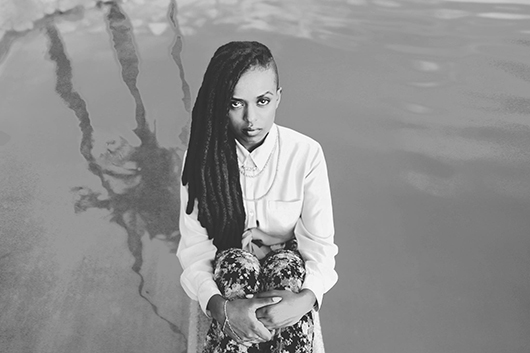
Total Freedom (Photo by Jake Michaels via FADER)
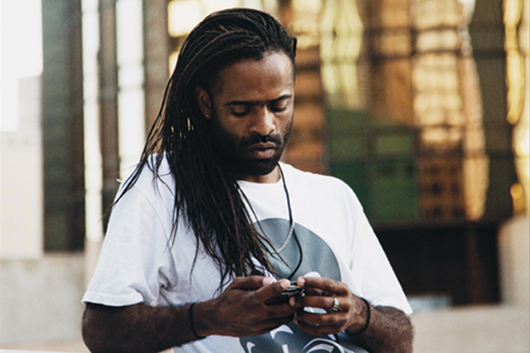
This sentiment—along with LA’s relatively reasonable cost of living—helps explain why so many DJ and producers have flocked to the city in recent years. The aforementioned Todd Edwards was once synonymous with New Jersey, but he was summoned to LA to work on Daft Punk’s Random Access Memories and ultimately elected to make the city his new home. House aesthete and Michigan native Magic Touch now calls the city’s Echo Park neighborhood home between marathon tours, joining a flock of migrants that includes bass-music veteran Grenier, his occasional collaborator Salva (who is now making major waves as a hip-hop producer), ’90s garage-house pioneer MK, tech-house star and Crosstown Rebels boss Damian Lazarus, moombahton dons (and longtime house heads) Nadastrom (a.k.a. Dave Nada and Matt Nordstrom) and Sabo, UK-born genre pluralist Sinden, liminal songwriter/producer Maria Minerva, and spiky house phenom Anthony Naples.
In some places, all of this talent might breed tension, but in LA, it seems to have resulted in community. Most competition is friendly, and many of the artists mentioned here are playing records or partying alongside each other on a regular basis. Sage Caswell, a young and enthusiastic LA native who burst onto the scene with a critically acclaimed 2013 collaboration with fellow Angeleno Cromie, “Vines” b/w “Pyrex” on Peach, comments on the tight-knit scene: “There used to be no sense of community within the city; there were a bunch of people doing the same thing, not talking about it or seeing each other. Now, we finally have a bunch of people who have stepped up with good ideas.” He names Cromie, Mount Analog, Cooper Saver (an occasional XLR8R scribe and promoter of the Far Away parties), and Body High’s Samo Sound Boy and Jerome LOL as particularly positive forces.
Cromie
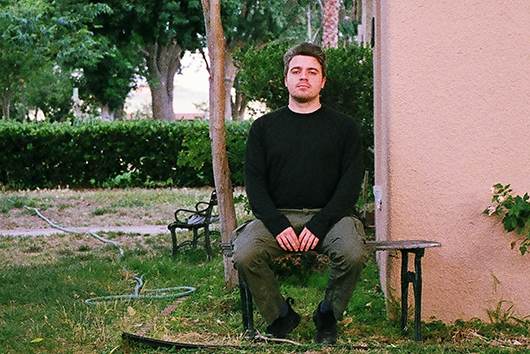
Sage Caswell
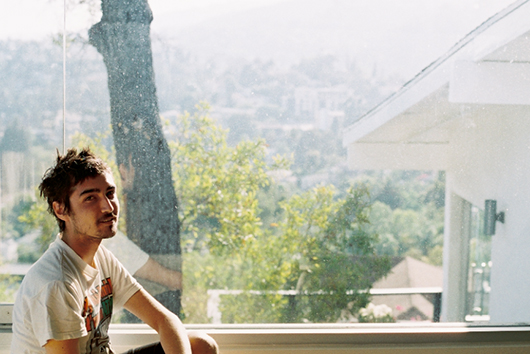
Without question, Body High has been key to the resurgence of house and techno in LA, particularly amongst younger crowds. Though the label has consistently pushed a four-to-the-floor sound and honored the music’s history—a Fall 2013 US tour even enlisted the talents of certifiable legends Juan Atkins, Anthony Shakir, and DJ Pierre—its aesthetic and fanbase bridges what was once a real divide between the city’s hip-hop and house/techno scenes. Earlier this month, Body High released its first LP, Friend of Mine, from DJ Dodger Stadium, the collaborative moniker of label founders Samo Sound Boy and Jerome LOL. The record uses a ’90s house approach to vocal sampling to create heart-tugging bangers, but Friend of Mine is also an effort inspired by the duo’s Los Angeles environs. (The video for the album’s lead single, “Love Songs,” takes the viewer on a journey above the streets of Macarthur Park, using a camera-mounted drone to find equal beauty in the neighborhood’s storefronts, traffic snarls, and the explosion of nature around MacArthur Park Lake.) Body High is invested in LA; the label has put on its own warehouse parties and continues to host a monthly Boiler Room “radio” show that regularly features a number of local producers and DJs, including Sage Caswell. Samo is excited about the young producer’s progress, saying, “As a DJ and a producer, [Sage] is someone who is going to be pushing things forward and trying different things; I want to do whatever I can to make sure he has the best platform.”
Caswell appreciates—and is definitely making the most of—this support, but he also views his music as part of something bigger than himself. In his mind, LA’s current groundswell has the momentum to create a lasting legacy in US dance music—a benchmark that has largely remained elusive for the city’s house and techno producers. “Places like Chicago, New York, have this really deep history,” he says. “We really don’t have that beyond the underground subculture of old-school raves. We’ve never had a movement of [house and techno] producers and artists that are really trying to say something for the city through music. I think that’s so exciting… how can I leave the city now when people are starting to recognize?”

